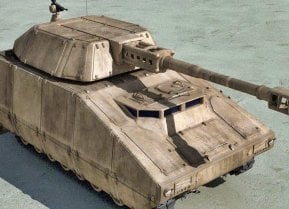Reising M50: The Worst Gun of World War II?
The Reising M50 was actually designed for law enforcement as something that could supplement a shotgun and be compact enough to fit easily in squad cars. The Marines thought it could take the place of the heavy Thompson submachine gun.
The Reising M50 was one really terrible World War II firearm for many clear reasons – Marines in World War Two thought they had a winner. This submachine gun was initially viewed as having an advantage in close-quarters combat against the Japanese in the jungles of the Pacific theater.
The Reising M50 submachine gun should have fit the bill. But it was unreliable and often broken, in ways that could not be repaired in the field. The unreliability of the weapon gives it the distinction of being the worst firearm ever issued to U.S. military personnel.
First Thought – Give it to the Cops
The Reising M50 was actually designed for law enforcement as something that could supplement a shotgun and be compact enough to fit easily in squad cars. The Marines thought it could take the place of the heavy Thompson submachine gun.
The Inventor Checked All the Boxes
The M50’s inventor, Eugene Reising, figured he had a hit in 1940. His weapon was lighter and cheaper to produce than the Tommy gun. ($62 compared to $200 for the Thompson). It was thought to be more accurate. The closed-bolt and delayed recoil allowed it to be steadier and more balanced in full-automatic mode. It could fire 550 rounds per minute. The M50 was only 6.8 pounds (the Thompson was 11-pounds) and 35-inches long. Tens of thousands of .45 caliber M50s were dispensed to marines by 1942.
Reising M50: Problematic in Combat
But it wasn’t effective in combat. The 20-round magazine capacity was not enough, especially in full-automatic, when it could spray all of its bullets in a couple of seconds. The effective range of 100 yards was limiting. Jungle environments and beaches for the island-hopping marines required a weapon to be impervious to corrosion, saltwater, and sand. The M50 jammed frequently. Since the parts were hand-fitted, normal field maintenance was not a cure for its ills. The Marines, in constant combat, did not have the time to disassemble the gun and give it the care that was needed. When marines discovered that the sights broke constantly, the M50s were often discarded.
Design Flaws Made it Hard to Operate
To make things more difficult for operation, the charging handle was located in the slot in front of the magazine. Marines had to reach forward awkwardly to pull the handle back and release it. Marines who needed even a smaller weapon for use in tanks and airborne operations had the M55 model with a wire stock that folded to the side. This version had similar problems.
The Marines refused the M50 and M55 and then the submachine gun was handed back to stateside police officers and security guards. It was eventually replaced by the .30 caliber M-1 carbine.
You can’t blame the marines for turning the Reisings down since the weapons performed so poorly in combat. The gun was probably not tested vigorously enough in adverse conditions. However, the marines required new weapons in a hurry after Pearl Harbor.
The Tommy gun was getting older, and the fighters needed something lighter and more compact for jungle-fighting. But the flawed Reising has to be considered the worst weapon ever assigned to U.S. warfighters.
About the Author
Brent M. Eastwood, Ph.D., is the author of Humans, Machines, and Data: Future Trends in Warfare. He is an Emerging Threats expert and former U.S. Army Infantry officer. You can follow him on Twitter @BMEastwood.
All images are Creative Commons.


